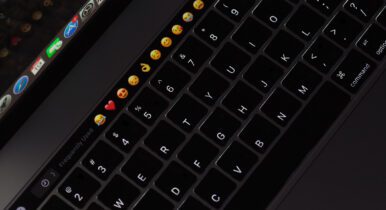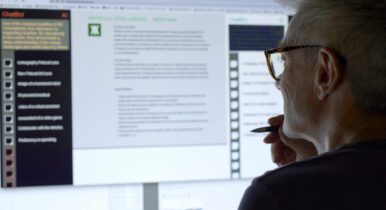A Ground-Level Perspective On Political Design
Graphic designer Robert Arnow runs a politically-focused shop called Incitement Design where he develops branding and creative for progressive candidates and campaigns. In an interview with Campaigns & Elections, Arnow offered advice on picking the right designer for your campaign and how to make branding feel more personal.
After starting his career in New York as a freelance creative, Robert Arnow moved out to the Bay Area and got involved in progressive politics. So deeply involved he ended up running a legislative campaign to get public financing for San Francisco’s mayoral races in 2008.
But after a decade in California, Arnow was burned out and moved back to New York. Still, he loved the design creative process and cared about the results of his activism, so he combined his passions into a politically focused shop called Incitement Design, where he serves as creative director.
In a conversation with C&E, Arnow talked about picking the right designer, mistakes candidates and groups make, what’s missing from the visual language of politics and how to make branding personal:
C&E: Why do consulting firms have trouble hiring good designers?
Robert Arnow: It’s really important on the consulting side, if they have someone who has a good design eye, if they can lead the process. You need to have somebody who is looking at someone’s work who can say, ‘this is good work and this isn’t.’ I think they often have problems because they don’t have anyone on their core staff who has a good eye for design. Then they don’t have the ability to know if they’re hiring a good designer or not.
C&E: What’s a mistake that candidates or groups make when it comes to design?
Arnow: People under invest in the initial logo and branding process, or have their cousin design their logo and the branding. They need to invest more in the beginning. If you get that done well and correctly, it can then be fairly easy for an average graphic designer to make really cool things out of that.
C&E: Is there something missing from political design?
Arnow: It’s good to pull from outside [sources], but every different type of industry is going to have its own visual language. If you stray too far outside of that, it can be risky. If you’re running for office, you don’t want to look like a teen magazine. But there’s certainly a lot to be drawn from different types of design.
I think the trend is more for everyone to really want to express their unique voice as opposed to everyone trying to move in one particular direction. We just did a logo for Kim Janey. They came to us and wanted to emphasize the historic nature of her candidacy — the fact that she’s progressive and the first black mayor of Boston. They wanted to capture that sense of the civil rights movement.
C&E: How do you make design personal for candidates?
Arnow: In my experience, the candidate exerts a lot of control. If they’re not open minded and they’re not creative, their personality will come through in the final product. Although we’d like them to take more of a back seat to it, and let us take more of a lead, they often feel like they need to be connected to the final product in some way.
We talk through it with them in an organic way, and try to get a sense of what the vibe of the candidate is. I want to find out what parts of the campaign they really want to emphasize. I want to understand their campaign strategy and help them crystalize that. Mostly people are trying to emphasize something, but sometimes they want to de-emphasize something. Like if they’re really young, they may want to de-emphasize that.
Most of the time, though, the idea is to really talk to the client to try to help them crystalize the most central feeling or vision or aspect of their campaign that can then be communicated into something visual.



